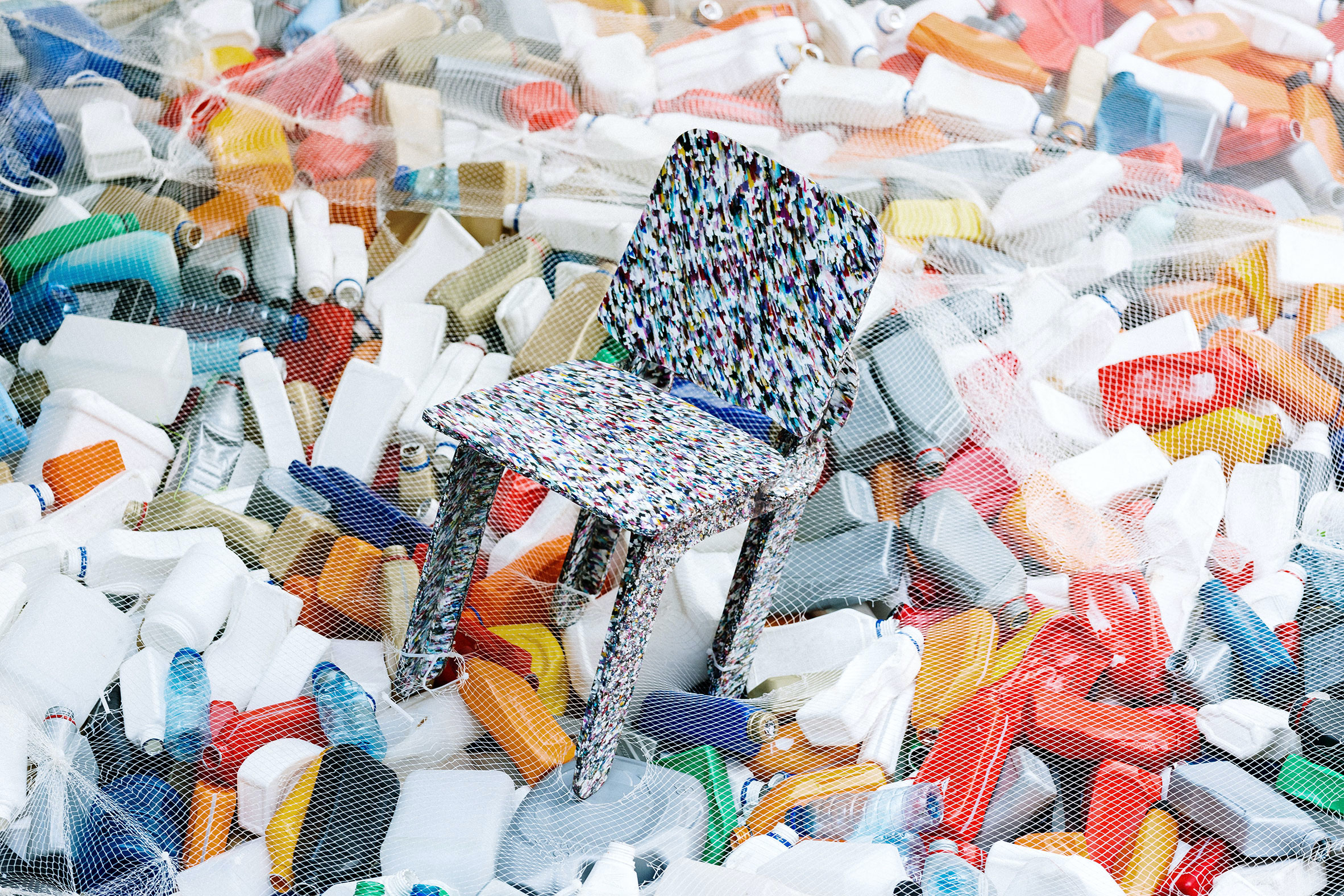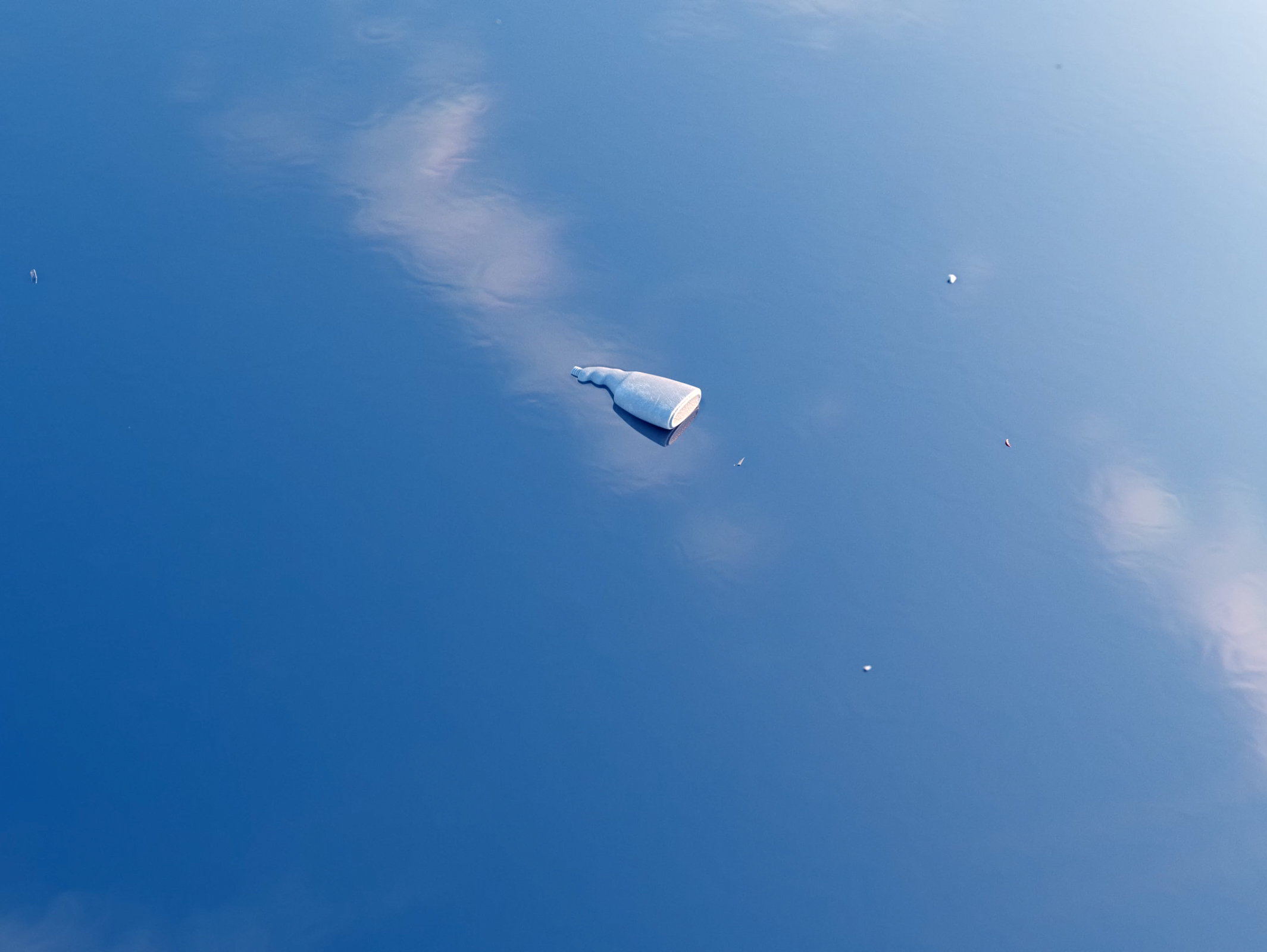
When approached by a journalist at Dezeen to answer questions for the feature ‘Is a plastic-free future possible?’ we jumped at the chance. Would-be waste plastic is literally what our business is made of. But in recent years, plastic as a material has understandably garnered a bad reputation. There’s simply too much of it out there. And not enough of it is being reused.
With this in mind, we feel that it’s the behaviour that surrounds the way plastic is treated that’s the problem, rather than the material itself. Very often produced for single-use, and considered low-value, traditionally plastic was made to be thrown away. But through applying circular design principles, the many practical properties that made it so popular in the first place, we believe, can be harnessed and used in brand new ways – time and time again.
The theme for Earth Day this year was 'end plastic'. But we think ‘rethink plastic’ is a better choice, in agreement with its mission to see a 60% reduction in the production of all plastics by 2040. Rather than ‘a plastic-free future’, we instead feel it should be a ‘circular-plastic future’.
You can read the feature written by Rima Sabina Aouf and published on Dezeen here. And for an expansion on our thoughts around how plastic contributes to a sustainable future, read on…

Every year, 400 million tonnes of virgin plastic is produced globally, and less than 10% of it is recycled. There are certainly some major challenges with plastics that need to be addressed as a matter of urgency.
We believe that a fundamental shift is imperative, focusing on reducing both the production and consumption of virgin plastics. Moreover, it's essential to revaluate how plastics are utilised, ensuring they are tailored to applications that align with their lifespan. Plastics have some amazing properties that can be harnessed through thoughtful design. Additionally, with the proper systems and infrastructure in place, plastics can be recycled repeatedly. Plastic itself is not inherently the issue, in our view – rather, it’s the linear production model and the lack of cost-efficient waste management systems that are problematic, as well as our poor relationship with the material.
We believe these linear systems must become circular. We don’t advocate for any more virgin plastic production, but for existing ‘waste’ plastic to be transformed again and again. This is what we’ve done at Smile Plastics now for over 30-years - crafting material collections of true beauty from discarded plastic diverted from landfill. Our supersized 100% recycled, 100% recyclable plastic panels are manufactured for use in commercial interior design and are made to be cherished - wearing glimmers of their past lives on their surface as a visual emblem of their place within a more sustainable ecosystem. When they do meet their eventual end of life, they are able to be repurposed into new beautiful materials, over and over again.
Another important component to look at in the search for sustainable materials is carbon impact. Not all surfaces are created equal, and we are proud to share our recently published EPDs and life cycle analyses on our materials.
These assessments demonstrate that our recycled plastic panels have a lower global warming impact compared to many comparable natural and man-made surfaces. This highlights that plastics, when manufactured conscientiously and within closed-loop systems, can serve as a low-carbon and readily available solution for the world's material needs. It's also essential to acknowledge that seemingly natural materials like ply and wood composites often contain high percentages of virgin resins and coatings, adding complexity to the sustainability evaluation of materials.
If we have all depended on plastics in the past and continue to depend on them today then we also have a duty to honour the material into future lives and design it appropriately into the built environment in a circular way.
How do you work with your own offcuts and end-of-life panels? What kind of products can they be recycled into, and how many times?
We advocate recycling plastics as part of a circular economy and through our active buy-back scheme. Any waste plastics generated during our manufacturing and cutting processes are returned to the beginning, modelling zero-waste manufacture.
Although our panels are built for longevity, they are 100% recyclable, with no binders, or resin – just pure recycled plastics. Any Smile Plastics product can be recycled locally or, as part of our buy-back scheme, returned to us to be remade as panels all over again in an infinite loop. There has been a great adoption of our buy back scheme for converting back into our core range of materials or site-specific custom materials and we are looking to build on this with our growing client base.
Is plastic a circular material in your view?
Thermoplastics can certainly be a circular material and we now urgently need to go on a journey to improve our behaviours, segregation, and recycling infrastructure so that we can support its circularity. There have been recent innovations in chemical plastics recycling technologies which provide a very promising solution for hard-to-recycle or heavily contaminated plastics.
It’s striking that our Smile Plastics production uses 70% less energy and lower temperatures than traditional plastics recycling. This is important not only from a carbon perspective but also when looking at continued circularity of the material. We operate to minimise the denaturing of the plastics through our recycling processes and can therefore support the circularity of our plastics for more iterations than standard recycling.
We want to see an end to single-use plastic, and the global adoption of a circular ecosystem in which all our existing plastic can be infinitely recycled and ‘waste’, as we know it, ceases to exist.
How easy is it to recycle plastic?
Plastic is an easy-to-use, highly versatile material, and that’s why we’re able to do what we do here at Smile Plastics. While we’ve invested in developing our unique manufacturing processes to create the highest quality decorative surfaces, plastics can be repurposed in all kinds of ways. But an important aspect of the process is in the sorting, separating, and processing of the ‘waste’. We work in partnership with local waste management companies developing quality standards that enable consistency through our production process.
Proper auditing of the plastics feedstocks for us is incredibly important to ensure that the plastics that we produce are Reach compliant and safe for their intended applications. Thanks to our low-impact processing methods, our materials exhibit no volatile organic compounds (VOCs), a notable contrast to other recycled plastics that may contain pockets of gas or VOCs throughout their structure. Essentially plastics need to be treated with care in order to preserve their recyclability and to ensure that they are not thermally degraded or unsafe to use.
With locality in mind, our decentralised manufacturing model promotes the production of materials on a local or regional level, with our factory in Swansea setting the blueprint. By adopting this approach to manufacturing, we hope to harness the potential of localised waste streams, reducing transportation costs and associated environmental impacts to, in effect, make it easier to scale up the process of recycling plastic globally.
Though we acknowledge there is work to be done to make plastic a circular material on a mass scale, we’re dedicated to supporting what we feel is its rightful place in the built environment’s future.